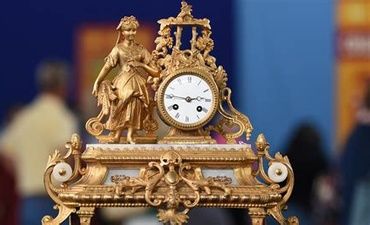Коллекционная ценность предмета, часто определяется возрастом
 Даже если вы не коллекционируете антиквариат или искусство вы можете оказаться обладателем редкого предмета, имеющего коллекционную и историческую ценность. Часто старинные вещи достаются от старших родственников, при покупке недвижимости, как случайная покупка с рук или подарок. Как самостоятельно разобраться в ценности старинного предмета и выяснить его рыночную стоимость?
Даже если вы не коллекционируете антиквариат или искусство вы можете оказаться обладателем редкого предмета, имеющего коллекционную и историческую ценность. Часто старинные вещи достаются от старших родственников, при покупке недвижимости, как случайная покупка с рук или подарок. Как самостоятельно разобраться в ценности старинного предмета и выяснить его рыночную стоимость?Средняя наценка московской скупки при перепродаже предметов старины купленных у граждан составляет 250% .
Коллекционная ценность предмета, часто определяется возрастом, местом производства, документально подтвержденной историей предыдущих владельцев и может не иметь ничего общего с внешним видом предмета и его функциональностью.
Особенность рынка старинных предметов в том, что здесь нет фиксированных цен, зато есть истории предыдущих продаж. Чтобы выгодно продать свою вещь, вам надо знать по чем в последнее время продавали аналогичные предметы. Соберите побольше информации о своей вещи и приступайте к поиску!
Внимательно осмотрите предмет. Найдите отметки, клейма, подписи, цифры.
Можете показать предмет в скупке и послушать, что скажет оценщик, но не продавайте, пока не получите больше сведений о цене из разных источников. Задайте в поисковике найденную информацию и общее описание предмета.
- Для фарфора: клейма и надписи на донышке предмета.
- Для ювелирных украшений и изделия из драг.металлов: клейма на всех отделимых частях изделия
- Для книг: выходные данные на титульном листе
- Для картин: подпись автора и дата на полотне и на обороте и т.д.
Если самостоятельно узнать информацию о предмете или историю продаж схожих предметов не получается, посоветуйтесь с коллекционерами. Для этого зарегистрируйтесь на одном или нескольких форумах, разместите четкие фотографии предмета и укажите всю уже найденную информацию.

